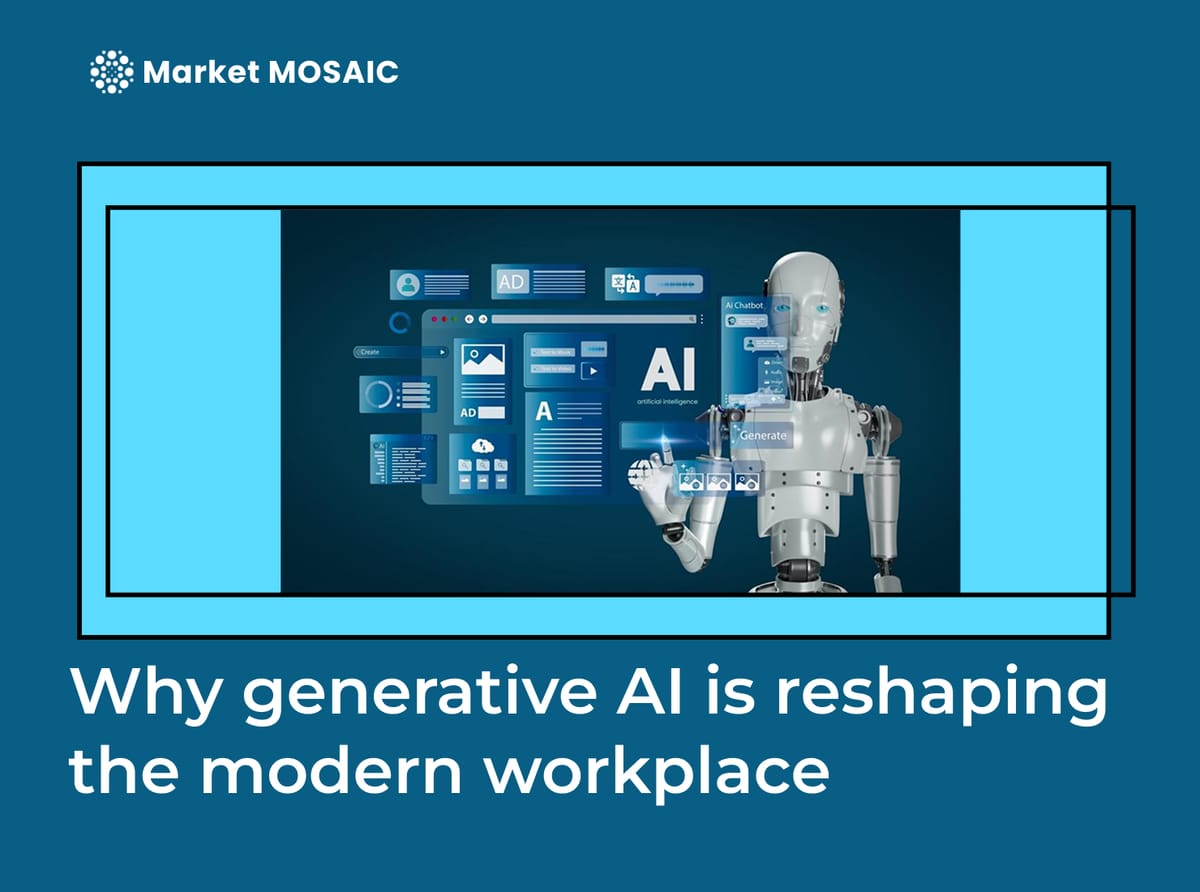Why generative AI is reshaping the modern workplace
Generative AI isn’t just helping teams move faster, it’s reshaping what work looks like. From real-time content creation to AI-driven decision-making, the future of productivity is no longer searched for, it’s being generated.

Just a few years ago, workplace productivity depended on searching for answers through search engines, static knowledge bases, or manual data crunching. Today, we’ve crossed into a new paradigm. The modern workforce has shifted from consuming knowledge to generating it in real time. Welcome to the era of generative AI.
Once a niche subset of artificial intelligence, generative AI (or GenAI) has exploded into mainstream usage. Unlike traditional AI, which classifies data or makes predictions, GenAI creates; producing original text, images, video, audio, and even code in response to human prompts. This leap has been powered by deep learning models algorithms that mimic the brain’s ability to recognize patterns and relationships in massive datasets, and then generate relevant, context-aware output in real time. The launch of ChatGPT in 2022 marked a significant turning point. Suddenly, complex AI capabilities became accessible to anyone with a browser. What followed was nothing short of a global shift.
According to McKinsey, one-third of organizations are already using generative AI in at least one business function. And Gartner predicts that over 80% of companies will be using GenAI tools or APIs by 2026.
AI moves from hype to habit
Our latest analysis shows that 71% of employees across 11 major industries now use generative AI for at least one function, up from 65% last year. The technology sector leads this charge, with 88% of employees actively engaging with AI-powered tools. Professional services follow closely at 80%.

Digging deeper into adoption trends, generative AI is now being embedded into specific business functions rather than applied generically. In marketing and sales, AI helps generate campaigns, tailor customer messages, and analyze feedback in real time. Product development teams are accelerating R&D cycles, using GenAI to prototype, ideate, and test faster than ever before.
At the enterprise level, the momentum is just as significant and perhaps even more revealing.16% of companies now deploy generative AI across five or more business areas, double the rate from just six months ago. What we’re seeing is a move beyond experimentation, as companies begin embedding generative AI across entire organizations.
Yet, the transformation isn’t universal. Operational areas like manufacturing (5%) and supply chain (7%) show significant lag, hinting at both the complexities of automation in physical systems and the untapped potential for disruption.
At the heart of GenAI is the ability to understand natural language prompts and synthesize new content instantly.For the workplace, this is revolutionary. Employees no longer need to sift through dashboards or write code to analyze a dataset. They can simply ask, and GenAI delivers summaries, projections, and even slide decks. It’s not just a time-saver, it’s a capability expander.
Strategic edge for business leaders.
For founders and business leaders, this moment requires more than curiosity. It demands strategy. The organizations that are gaining ground today are the ones that are moving fast not just to deploy tools, but to rethink their workflows, retrain their teams, and embed GenAI into the DNA of their operations. Generative AI is no longer confined to IT or innovation teams. It’s a new kind of digital infrastructure that reshapes everything from customer experience to internal productivity.
Executives must now consider whether their teams are AI-literate, not just AI-aware and most importantly, they need to understand that responsible adoption; factoring in ethics, data privacy, and content quality must grow in tandem with innovation.
This is more than a trend, it’s a turning point. Generative AI isn’t just speeding up work; it’s redefining what work can be.
As the McKinsey report frames it, we’re entering the era of the “superagency workplace”, where people, empowered by AI, work with amplified capacity. The companies who act now will shape the rules of this new landscape. Those who delay may find themselves playing catch-up in an environment where speed, creativity, and intelligent automation are the new currency.





